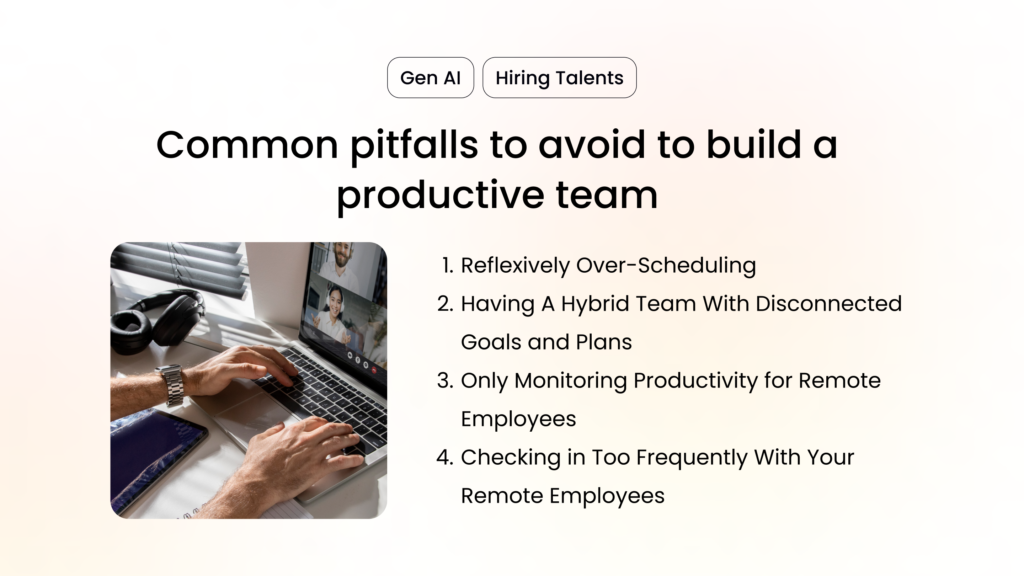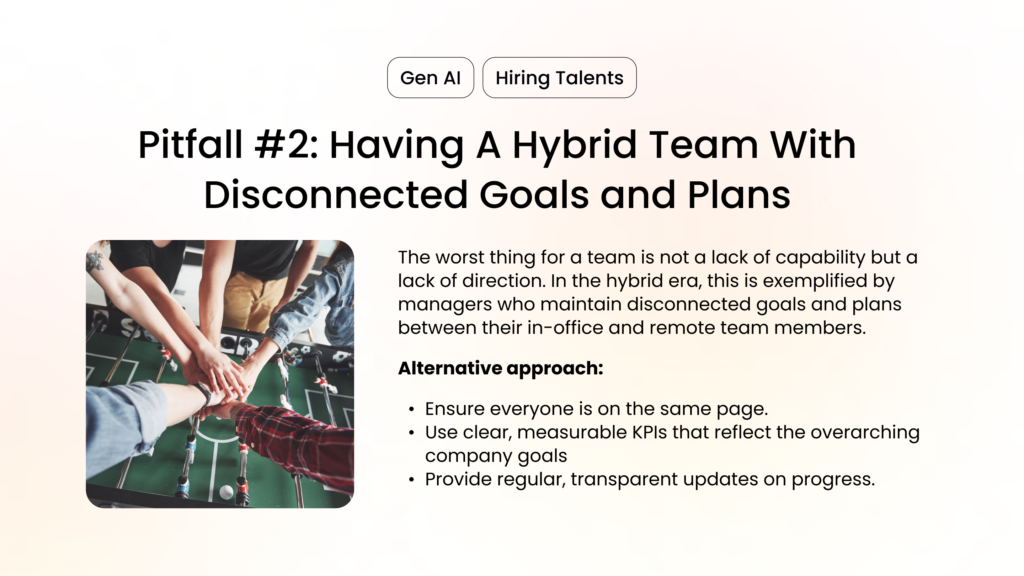The work environment is evolving, moving towards a flexible model that accommodates both traditional office workers and individuals who thrive in the comfort of their home offices. Amidst the shift towards hybrid work environments, concerns about productivity are growing. Managers face a unique challenge: enhancing productivity in an environment where traditional standards have become outdated.
If you are struggling to build a hybrid team in which measuring and evaluating productivity is at ease, this article is for you. In this article, we will discuss the four most frequent pitfalls managers fall into and what you can do instead to increase productivity at work.

Reflexively Over-Scheduling
At first glance, what manager doesn’t want their team to rock the productivity metrics? The reflex is to schedule more, engage in more meetings, and create a digital paper trail of tasks that rival an Amazon rainforest in complexity. The problem is, that the increased schedule doesn’t necessarily equate to an increase in productivity; it’s more often the recipe for burnout.
An Alternative Approach:
The key to productivity with a hybrid team is not ‘more’ – it’s ‘balance.’ Instead of packing schedules to the brim, practice ‘focused scheduling.’ Identify core hours when all team members can be available and align that time with high-impact activities. Beyond that, encourage deep-work hours where employees can turn off notifications and work undisturbed, knowing their team trusts them to deliver.
Having A Hybrid Team With Disconnected Goals and Plans
The worst thing for a team is not a lack of capability but a lack of direction. In the hybrid era, this is exemplified by managers who maintain disconnected goals and plans between their in-office and remote team members.

An Alternative Approach:
The solution here is all about ensuring everyone is on the same page. Use clear, measurable KPIs that reflect the overarching company goals and provide regular, transparent updates on progress. Tools like Notion, Trello, or JIRA can centralize and visualize these goals, making them accessible and engaging for all team members, no matter their location.
Only Monitoring Productivity for Remote Employees
One of the starkest concerns of the hybrid model is perceived productivity, especially when one part of the team is out of sight. It’s easy to become fixated on monitoring the inputs of the remote staff while the in-office employees can sometimes go unwatched.
An Alternative Approach:
Productivity should not be perceived through the lens of visibility or hours worked. Focus instead on output and quality of work. Use project management tools that track deliverables and accomplishments. Encourage an environment of trust where the work speaks for itself, not the location where it’s being accomplished.
Checking in Too Frequently With Your Remote Employees
When it’s harder to have a water cooler chat or a spontaneous update, the remote worker can sometimes feel either isolated or under the microscope. Managers may try to counter this by checking in too frequently or demanding immediate responses, which can create a climate of stress and pressure.
An Alternative Approach:
The golden rule here is to ensure your check-ins are mindful and routine while leaving space for the individual to manage their own workflow. This could mean a week kick-off video meeting to set the tone, followed by daily informal updates. Always make clear that these check-ins are just as much an opportunity for the remote team member to voice concerns or seek support as they are for you to keep tabs on ongoing work.
The bottom line
The success of your hybrid team depends on how well you adapt to this new way of working. The traps detailed above might seem like minor missteps but can lead to detrimental long-term effects if left unaddressed. The alternative strategies are signposts to a more sustainable and productive team dynamic—a dynamic rooted in trust, balance, and clear communication. The world of work is evolving, and as managers, so must we.






